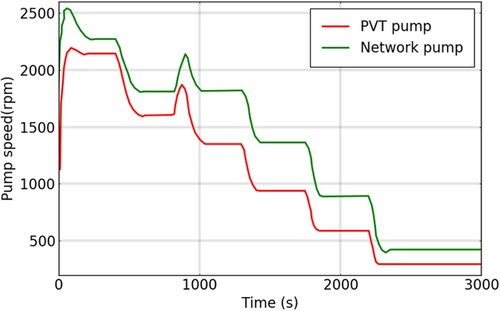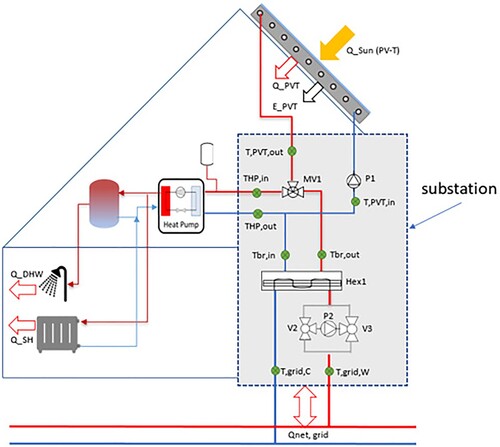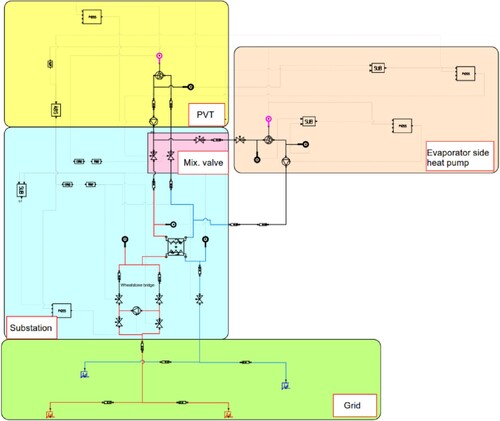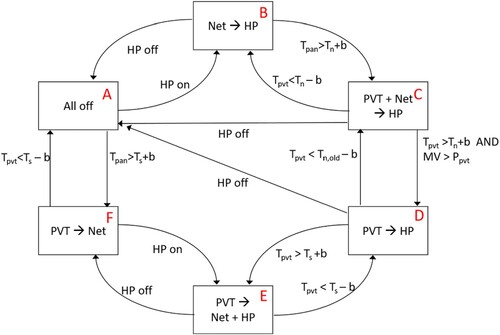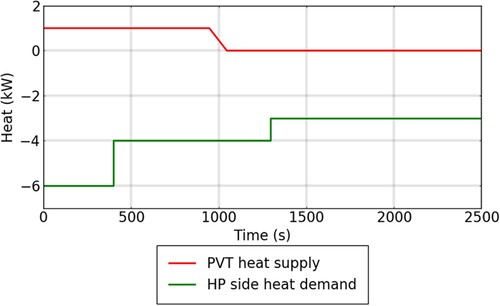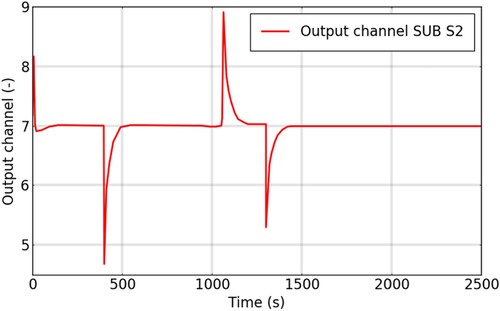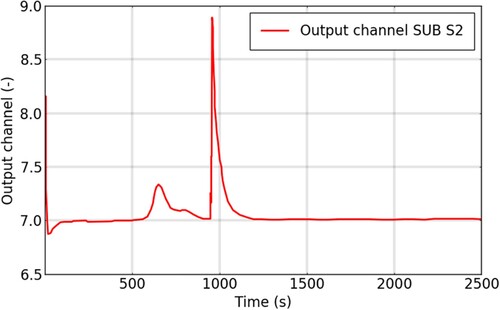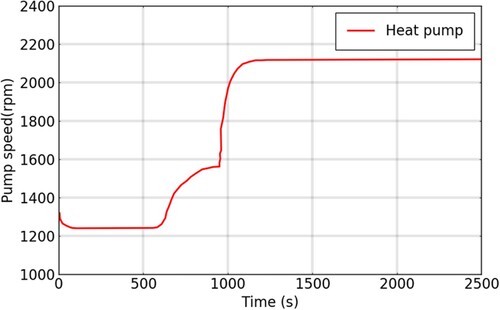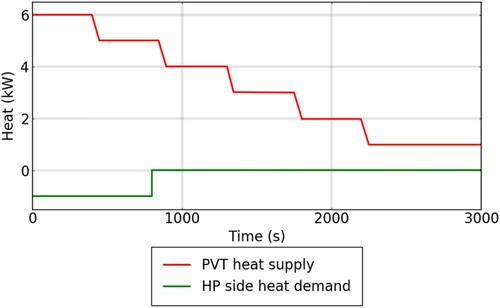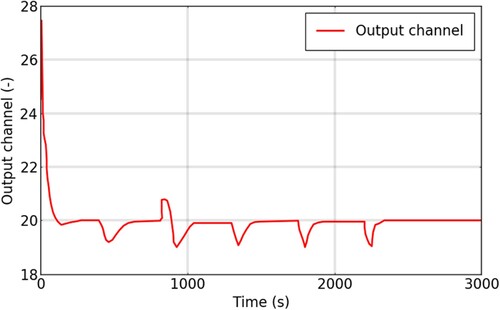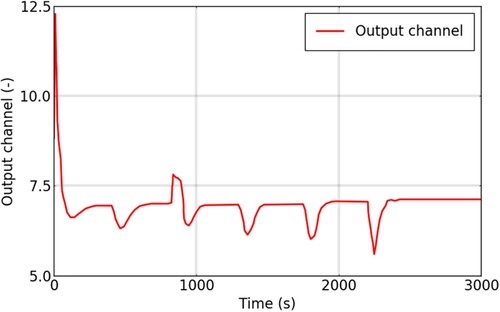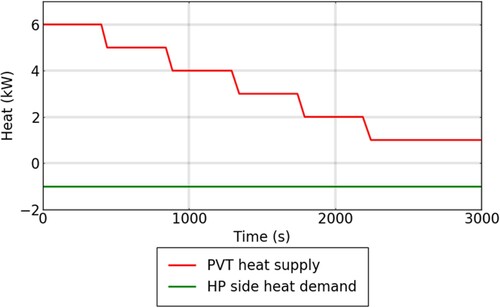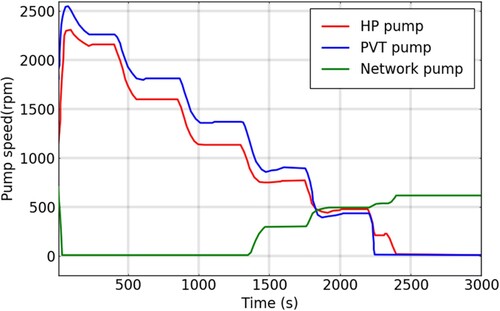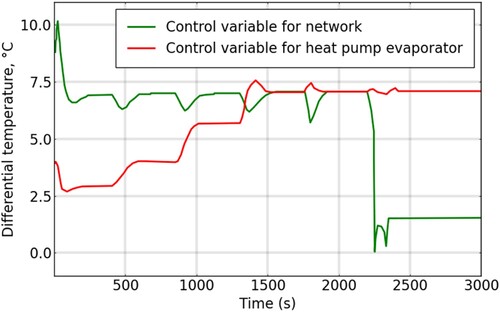Figures & data
Table 1. Overview of control setpoint values per operational mode.
Table 2. Control setting of the three substation pumps.
Table 3. Control settings of the mixing tap of the substation set.
Figure 6. C → B: Pump rotational speed controlled (Top green line: network pump speed, bottom red line: HP inlet speed).
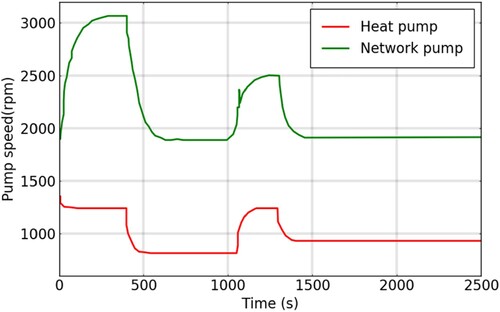
Figure 12. E →F: Pump rotational speed controlled (Top green line: the network pump speed and bottom red line: the PVT pump).
